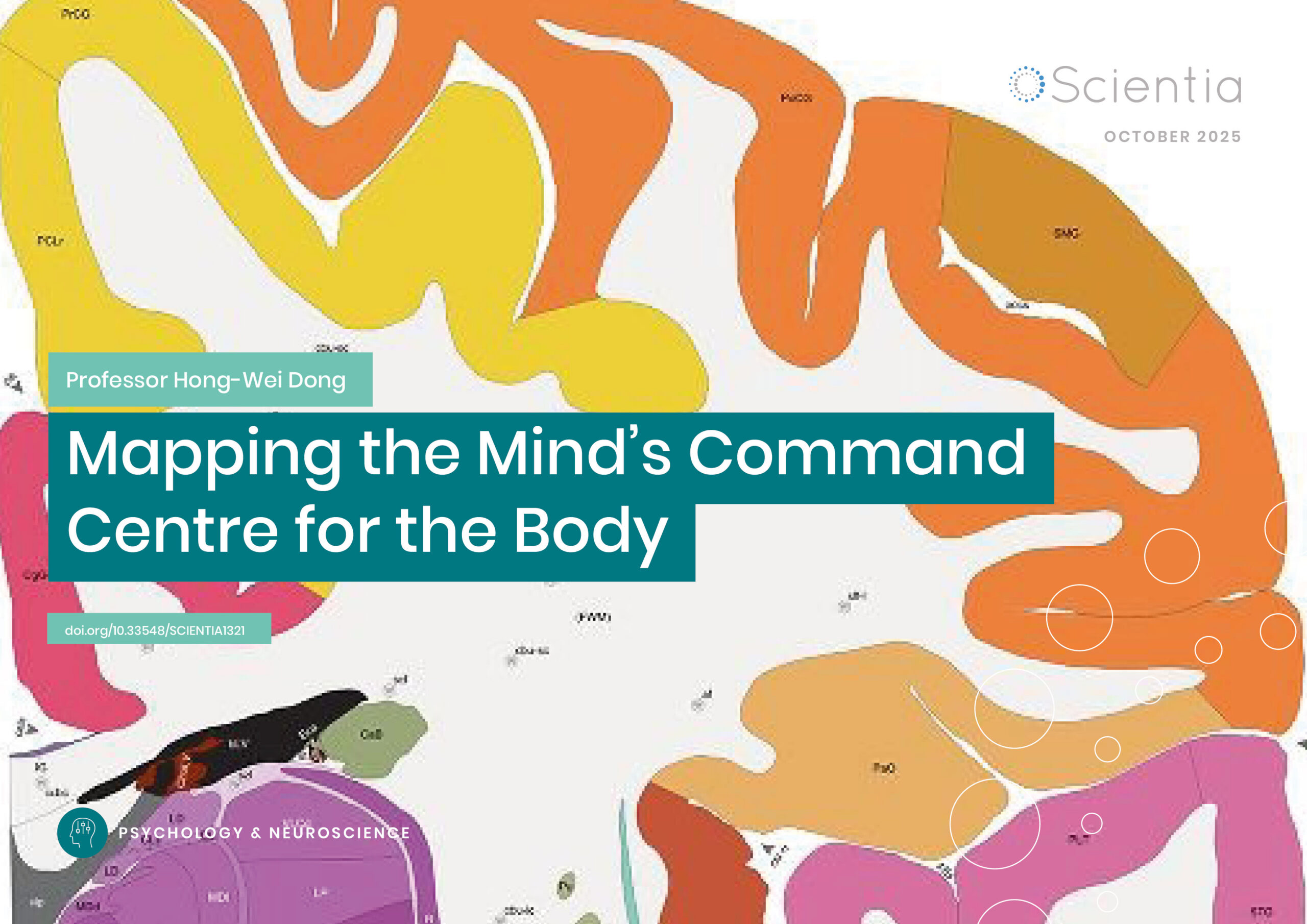Dr Gabrielle Garon-Carrier | How Do Childcare Arrangements Impact Education Outcomes?
A stimulating and nurturing early childhood experience is critical to achieving better educational outcomes in later life. But what are the best childcare arrangements? Is it better to be looked after by family members or a nanny at home, or would care provided by qualified carers in a more structured environment bring additional benefits? A large study by Dr Gabrielle Garon-Carrier, from the Université de Sherbrooke, Quebec, Canada, sought to find answers to these burning questions.
The Childcare Conundrum
Parents all over the world face difficult decisions about childcare arrangements. Should their child be looked after by a family member, friend, or neighbour until school age or would hiring a nanny with relevant experience and references be better? Would the child benefit from spending time in a professionally organised and run childcare facility? Financial implications, the potentially hurt feelings of willing relatives, and considerations about the location and opening hours of organised childcare facilities make these decisions particularly hard to reach. The stakes are high: A positive early experience is likely to influence later educational attainment and will have a profound influence on the future of the child. Sporadic news articles confuse the issue further, with some suggesting a benefit from participating in organised care, others questioning it.
So, what do scientists studying early child development think about this thorny issue? Canadian child psychologist and education expert, Dr Garon-Carrier from the Université de Sherbrooke, points out that this problem is more complex and controversial than many of us might think.

A Confusing Picture
Formal childcare can take two forms, in which children either attend an organised centre or can be looked after by a trained, officially accredited carer in the home environment. The common feature of these arrangements is the professional training the caregivers receive. Informal care, in contrast, is provided by a willing family member, neighbour, or friend. For decades, scientists have been exploring how the outcomes of these arrangements compare, but unfortunately, the picture that emerges is both complex and confusing.
Dr Garon-Carrier explains that previous studies have often been limited in scope. She further notes that often children have been observed over only a short period of time and researchers have omitted crucial details from their evaluations. While difficult to record, follow and interpret, features such as the education of the carers, the financial arrangements and social status of the family, and other circumstances will have a significant effect on outcomes.
For example, informal care provided by a well-educated grandparent in an affluent home is likely to be very different from what a child experiences when the carer is less educated, financially disadvantaged, or unemployed. Similarly, drawing conclusions on the effects of formal care is complicated by a range of factors, such as the number of hours of participation in organised care –the ‘dose effect’. Even the sex of the children seems to have an influence – perhaps surprisingly, boys seem to benefit more from formal childcare than girls. Obtaining a comprehensive picture is made even more difficult by the reportedly different benefits of attending formal childcare arising from studies conducted in the USA, Canada and the UK.

Searching for Clarification
This lack of definitive data prompted Dr Garon-Carrier and her co-workers to embark on a large-scale longitudinal study on how childcare arrangements influence educational aspirations later in life. The researchers took a long-term view and examined the likelihood of the children embarking on higher education. They obtained access to a large database of children held by Statistics Canada, a state-run national information database.
From this database, families with at least one child aged 24 to 36 months in 1994/5 were selected. The families were interviewed every two years between 1994 and 2008, and information was gathered about childcare arrangements, child behavioural problems such as depression and separation anxiety, family income, and the working hours of parents. The working patterns of parents were ascertained and critically, information about formal and informal childcare. Establishing attendance at higher education was achieved through Canadian tax arrangements.
Of the participating children, 51% had never attended childcare and were exclusively looked after by a parent (usually the mother). The majority of these families were from lower socioeconomic classes. To analyse the remaining families, the researchers used complex statistics to compensate for the large number of factors that could have potentially influenced the educational achievements later in the life of a given child. Briefly, this approach established pairs of children where the parental income, work arrangements and other parameters were comparable, and the pair differed only in having received childcare in either formal or informal settings.
Some Unexpected Findings
On average, 83% of the initially studied children completed at least one year in higher education. However, this number was lower (79%) amongst individuals attending formal childcare and higher (89%) in those who were looked after informally in their childhood. As might be expected, Dr Garon-Carrier and her co-workers also found that girls and children of well-educated parents usually achieved better. However, there were two unexpected trends. First, children attending informal childcare were more likely to pursue higher education. Second, children in middle- or higher-income families attending formal childcare were less likely to participate in higher education. In contrast, children from poorer, often out-of-work households were helped by attending formal arrangements.
Dr Garon-Carrier and her team did not expect to see such a difference between the outcomes for children from lower vs higher-income families attending formal childcare arrangements. She was even more surprised that children attending informal childcare were doing better in terms of enrolment in higher education, regardless of the financial state of the families.
To further understand these unexpected findings, the researchers undertook more in-depth analyses in which they compared two types of formal arrangements: childcare provided in organised central facilities or provided at home by a trained and accredited carer.

Explaining the Benefits of Informal Arrangements
Despite further investigation, no differences in the probability of pursuing higher education were found between children attending formal childcare arrangements in a central facility or at home, which further underlined that informal arrangements resulted in better long-term educational prospects.
Dr Garon-Carrier herself believes that selecting 24- to 36-month-old children for the study may have been a reason to explain these findings. She points out that at this age, interpersonal interactions with an emotionally involved carer may be more important than developing social skills by interacting with a group of other children. At a later age, the importance of these factors may change. Thus, selecting an older age group at the start of the study may have resulted in different conclusions. These findings also imply that similar children from underprivileged backgrounds do not always benefit from the same level of emotional support in informal care arrangements. Consequently, this vulnerable group seems to benefit more from the presence of a qualified carer from a younger age.
Dr Garon-Carrier also believes that the practicalities of investigating the influence of early childcare on the likelihood of attending higher education also affected outcomes. To allow such long-term follow-up, children who were aged 24 to 36 months had to be selected from 1994/95. It is important to mention that the quality of organised formal childcare in Canada has changed significantly since the mid-90s. Providers are better trained, the facilities are more strictly regulated, and are increasingly being inspected by local government agencies to ensure education quality. Thus, repeating this study in a decade could bring about different outcomes.
Important Conclusions
The importance of childcare provision does not only affect individuals and their families. Improving educational outcomes for vulnerable groups is the best way to improve their life chances, benefitting both the individual and society. Unfortunately, recent studies have shown that Canada lags behind comparable countries in providing childcare for working families. Recognising the importance of these early interventions, the Canadian government has announced the provision of a $30 billion investment over the next 5 years for the development of a nationwide childcare network.
The work of Dr Garron-Carrier and her co-workers demonstrates the long-term effects of attending childcare arrangements at the age of 24 to 36 months, with measurable consequences in educational attainment 20 years later, in early adulthood. In particular, demonstrating the beneficial effects of early organised childcare attendance on the futures of vulnerable children will be critical in shaping educational policies for years to come.
SHARE
DOWNLOAD E-BOOK
REFERENCE
https://doi.org/10.33548/SCIENTIA852
MEET THE RESEARCHER
Dr Gabrielle Garon-Carrier
Université de Sherbrooke
Sherbrooke Quebec
Canada
Dr Garon-Carrier completed her undergraduate studies at the Université Laval and then her PhD at the same university in 2016. This was followed by postdoctoral research at Goldsmiths, University of London. After working for the Canadian Government, she became an assistant professor in the Department of Education at Université de Sherbrooke. Her work is focused on the early-life factors affecting school readiness and educational achievements in later life. She has published extensively on the development of early numeracy and its role in scholarly achievements, the factors influencing motivation during school attendance, and the development of separation anxiety during pre-school childcare. The importance and impact of this work have led Dr Garon-Carrier to hold a Tier 2 Canada Research Chair on school readiness, the inclusion of vulnerable populations and social adjustment, and to see her work feature regularly in the media.
CONTACT
E: gabrielle.garon-carrier@USherbrooke.ca
W: https://www.lillab.org/
KEY COLLABORATORS
Caroline Fitzpatrick
Arya Ansari
Marie-Josée Letarte
FUNDING
Social Sciences and Humanities Research Council of Canada
Fonds Québécois de la Recherche sur la Société et la Culture
Canadian Institutes of Health Research
Université de Sherbrooke
FURTHER READING
G Garon-Carrier, A Ansari, M-J Letarte, C Fitzpatrick, Early childcare enrollment and the pursuit of higher education: A Canadian longitudinal study, Learning and Instruction, 2022, 80, 101615. https://doi.org/10.1016/j.learninstruc.2022.101615
G Garon-Carrier, M Boivin, J-P Lemelin, et al., Early developmental trajectories of number knowledge and math achievement from 4 to 10 years: Low-persistent profile and early-life predictors, Journal of School Psychology, 2018, 68, 84–98. https://doi.org/10.1016/j.jsp.2018.02.004
G Garon-Carrier, M Boivin, Y Kovas, et al., Persistent genetic and family-wide environmental contributions to early number knowledge and later achievement in mathematics, Psychological Science, 2017, 28(12), 1707–1718. https://doi.org/10.1177/0956797617721480
G Garon-Carrier, M Boivin, F Guay, et al., Intrinsic motivation and achievement in mathematics in elementary school: A longitudinal investigation of their association, Child Development, 2016, 87, 165–175. http://dx.doi.org/10.1111/cdev.12458
M Battaglia, G Garon-Carrier, SM Côté, et al., Early-childhood trajectories of separation anxiety: Bearing on mental health, academic achievement, and physical health between mid-childhood and pre-adolescence, Depression and Anxiety, 2018, 34, 918–927. https://doi.org/10.1002/da.22674

REPUBLISH OUR ARTICLES
We encourage all formats of sharing and republishing of our articles. Whether you want to host on your website, publication or blog, we welcome this. Find out more
Creative Commons Licence (CC BY 4.0)
This work is licensed under a Creative Commons Attribution 4.0 International License. 
What does this mean?
Share: You can copy and redistribute the material in any medium or format
Adapt: You can change, and build upon the material for any purpose, even commercially.
Credit: You must give appropriate credit, provide a link to the license, and indicate if changes were made.
SUBSCRIBE NOW
Follow Us
MORE ARTICLES YOU MAY LIKE
Dr Liisa Laakso | Lighting the Way: Exploring Photobiomodulation to Ease MELAS
MELAS is a rare and serious genetic condition that affects how the body’s cells produce energy, leading to extreme fatigue, muscle weakness, and a range of other symptoms. With no cure currently available, treatment focuses only on managing complications.
A team of researchers led by Dr Liisa Laakso at the Mater Research Institute-University of Queensland, Australia, is exploring an innovative, non-drug therapy called photobiomodulation, which uses light to stimulate mitochondria to work more efficiently. This pioneering study will provide intial evidence on whether PBM can safely reduce fatigue and improve quality of life for people living with MELAS, paving the way for future clinical trials.
Professor John Paul Pezacki, PhD, FRSC (UK) | Engineering Proteins for the Prevention of Disease Progression
The way in which viruses invade and replicate within their hosts involves a multilayered system of protein-based interactions, and understanding the mechanisms at play is crucial when developing potential treatments. Utilising new techniques such as genetic code expansion, Professor John Paul Pezacki and his team of researchers at the University of Ottawa in Canada have designed a novel, highly specific artificial protein complex which can halt the progression of viral infections in human cells. They have identified and described a novel approach to wider preventative and restorative therapeutics in human disease.
Professor Rebecca States | Better Balance with Exercise: Choices for Parkinson’s
Parkinson’s disease is the most rapidly growing neurological disease worldwide. At present, there are no treatments that can prevent or reverse the damage caused by this disease. Therefore, there is a demand for therapies that ease and manage symptoms. Professor Rebecca States of Hofstra University collaborated with colleagues from Long Island University to evaluate the effects of exercise on the balance and postural control of individuals with Parkinson’s disease. The outcomes shed light on how exercise should be used for healthcare practitioners and researchers working with Parkinson’s disease.
Professor Hong-Wei Dong | Mapping the Mind’s Command Centre for the Body
The brain’s ability to manage stress and guide behaviour, including making decisions or interacting with others, relies in part on an area called the medial prefrontal cortex. But exactly how this region controls the body’s internal responses has remained unclear. New research on mice led by Prof Hong-Wei Dong and his team at the University of California Los Angeles (UCLA) sheds light on a little-studied part of the brain that may play a key role.
The work reveals a complex network, unconvering a previously undefined “primary visceromotor cortex” in the mouse brain, that helps link thoughts, feelings, and physical state. This discovery could reshape our understanding of how the brain controls stress, emotion, and internal bodily functions, and offer new insights into human mental health disorders.






